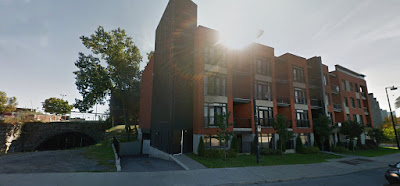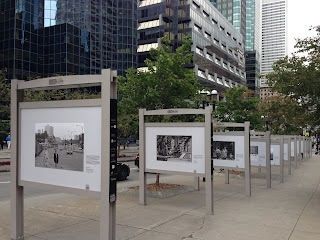Henri Marchessault remains the symbol of the disgraced Montreal cop after the drug squad chief was caught reselling some of the drugs that he was in charge of in 1983.
But what role did the Rosemont Trottier clan of 44th Ave play in his downfall?
Marchessault, 44, was high-flying head of a 34-man unit when caught selling cocaine and hashish to Louis Trottier at the Place Versailles shopping mall on March 21, 1983.
Marchessault started with the Montreal police as a 19-year-old in about 1958 and soon found himself on the swashbuckling Night Squad, whose deference to rules was not always the to the gold standard. He headed the investigation into Mafia chief Paolo Violi, considered one of the great Montreal police accomplishments of the time.
![]()
Along the way he met a cop named Louis Trottier who would eventually quit the force in about 1973 for reasons unknown.
The Trottiers were a well-known family from 44th Ave. in Rosemont. The father owned a confectionery warehouse on St. Andre where he sold playing cards, bingo paraphernalia and such items. He was a gloriously good looking man and his wife had looks to match.
They had three sons including Louis and Michel Trottier.
The Trottiers lived a couple of doors down from wrestler Dino Bravo on 44th, who was eventually gunned down from shots taken outside of the home by still-unapprehended assailants
Marchessault was earning $40,000 in his job as head of the drug squad when arrested in March 1983 but he had been eligible to take his pension four months earlier.
Marchessault told investigators that he needed fast because he owed a lot to the senior Trottier, as well as federal and provincial tax authorities and the Caisse Populaire.
Why a high-ranking Montreal police officer would owe so much money was something that was never made entirely clear.
So at 9 a.m. one morning Marchessault entered the drug vault, took some cocaine and hockey puck-shaped hashish patties, replaced some of it with white powder and met with Louis Trottier to sell the drugs for about $14,000. The 36 kgs of hash and 184 grams of cocaine were not considered massive amounts.
Marchessault claimed it was the first time he had done such a thing. He had $25,000 in his safety deposit box at the time of his arrest.
The RCMP had placed a hidden camera in the drug vault and investigators had caught him with a brown paper bag and briefcase. They also had taped phone conversations, so Marchessault was
forced to
confess.
He briefly attempted to plead temporary insanity. "I still don't know what came over me," he said. Marchessault was sentenced to 14 years but within months reports were out that he was receiving some
posh treatment as a
prisoner and was actually living with a family rather than in prison. He
sought an appeal for a more lenient sentence, noting that cops in a similar case received only 10 years.
He would likely have been released at or before 1990, never to be heard from again.
He would be around 76 today if still alive.
The RCMP, MUC Police Chief Andre De Luca and officer Jacques Duchesneau were lauded for their participation in the high-profile take-down.
Louis Trottier also eventually pleaded guilty and received a two year sentence. The Crown wanted more and attempted to appeal. Trottier's lawyer proposed instead that he give speeches about the evils or drugs.
As for the other Trottier, Michel? He was a wheeler-dealer who bought a bar at
Belanger and Lacordaire with Claude Provost. It was known as Bar 85 and Michel eventually settled down with one of the barmaids in Pointe aux Trembles whom he spoiled with luxury items.







.png)
.png)




















